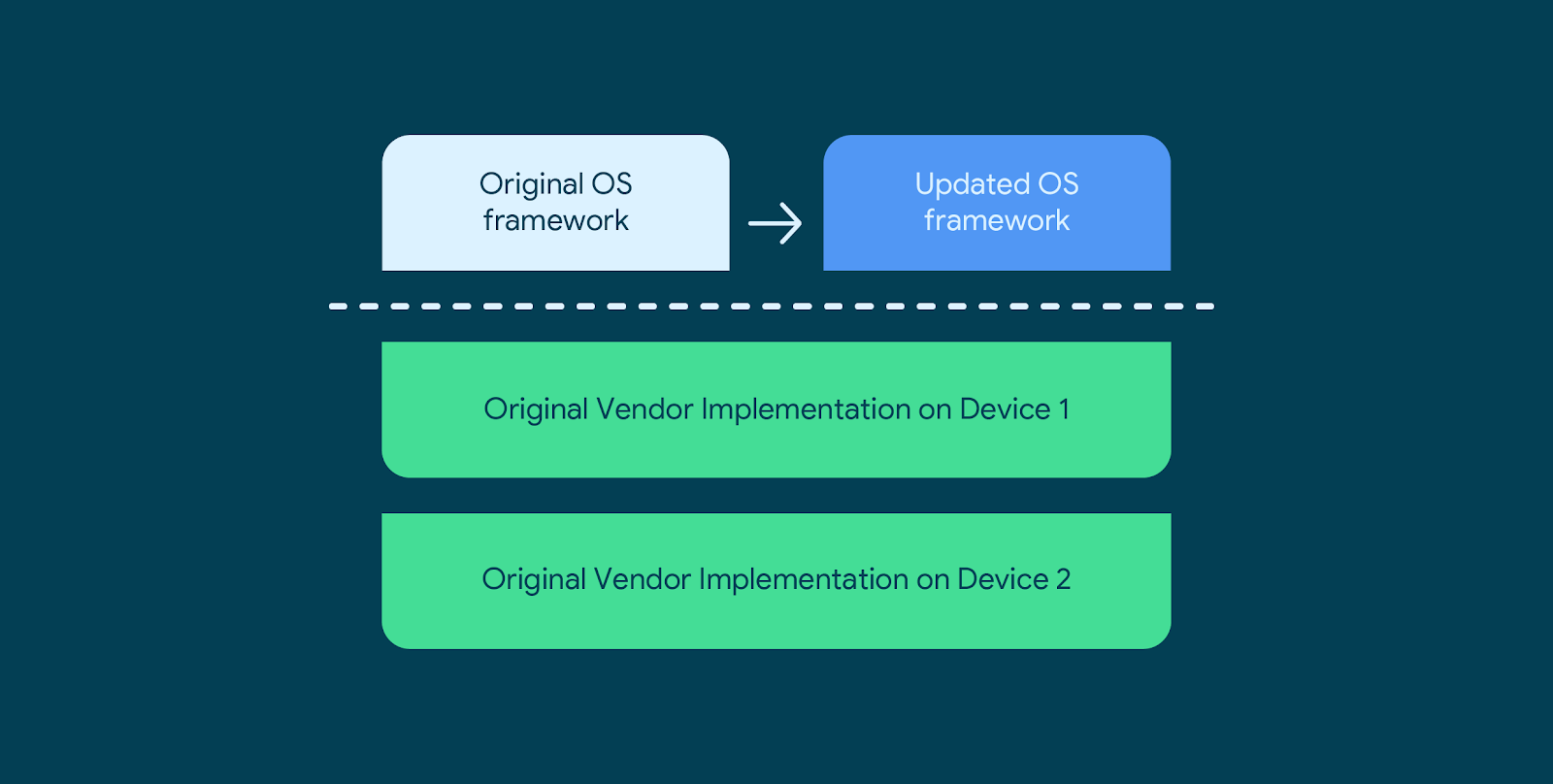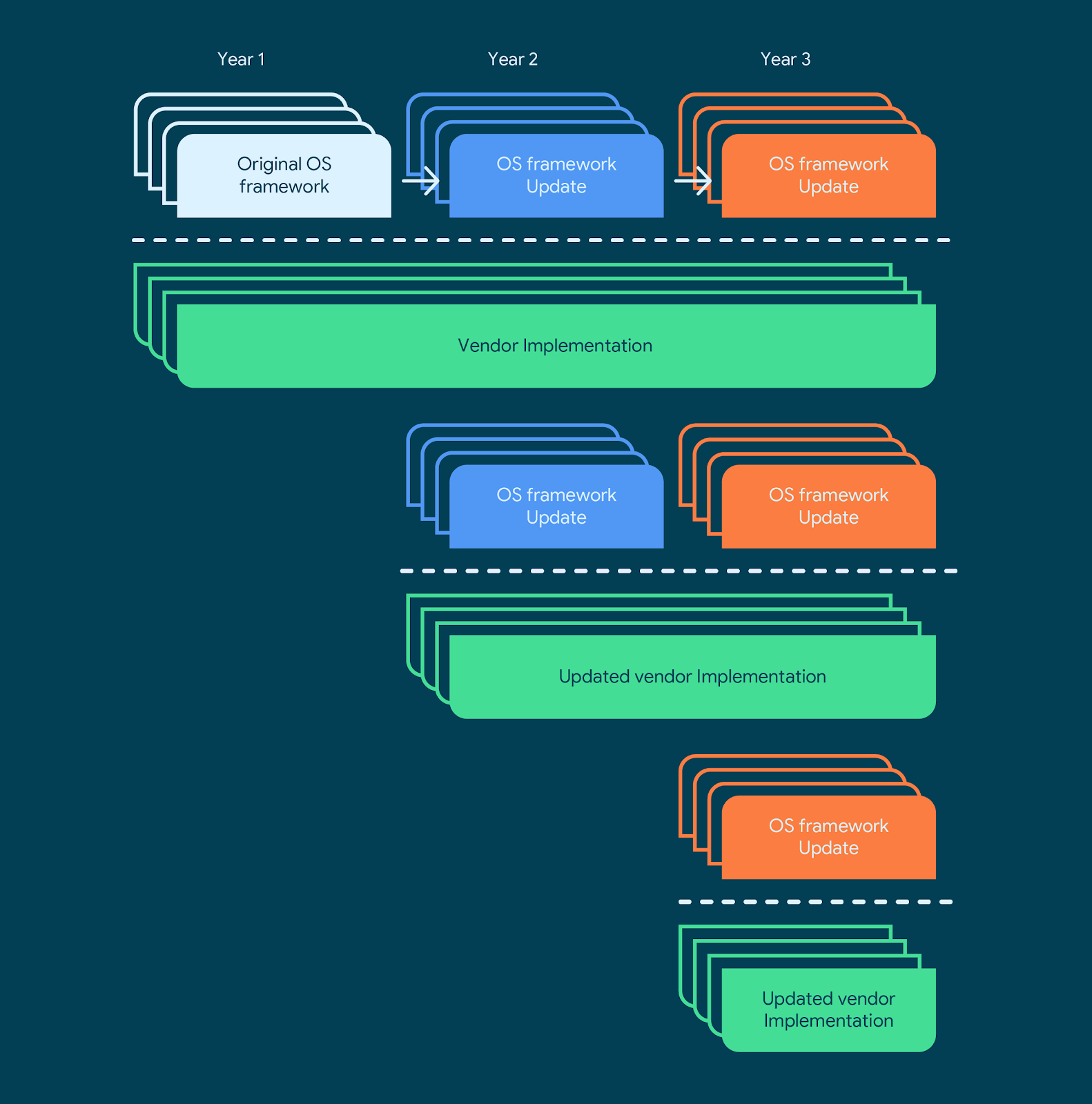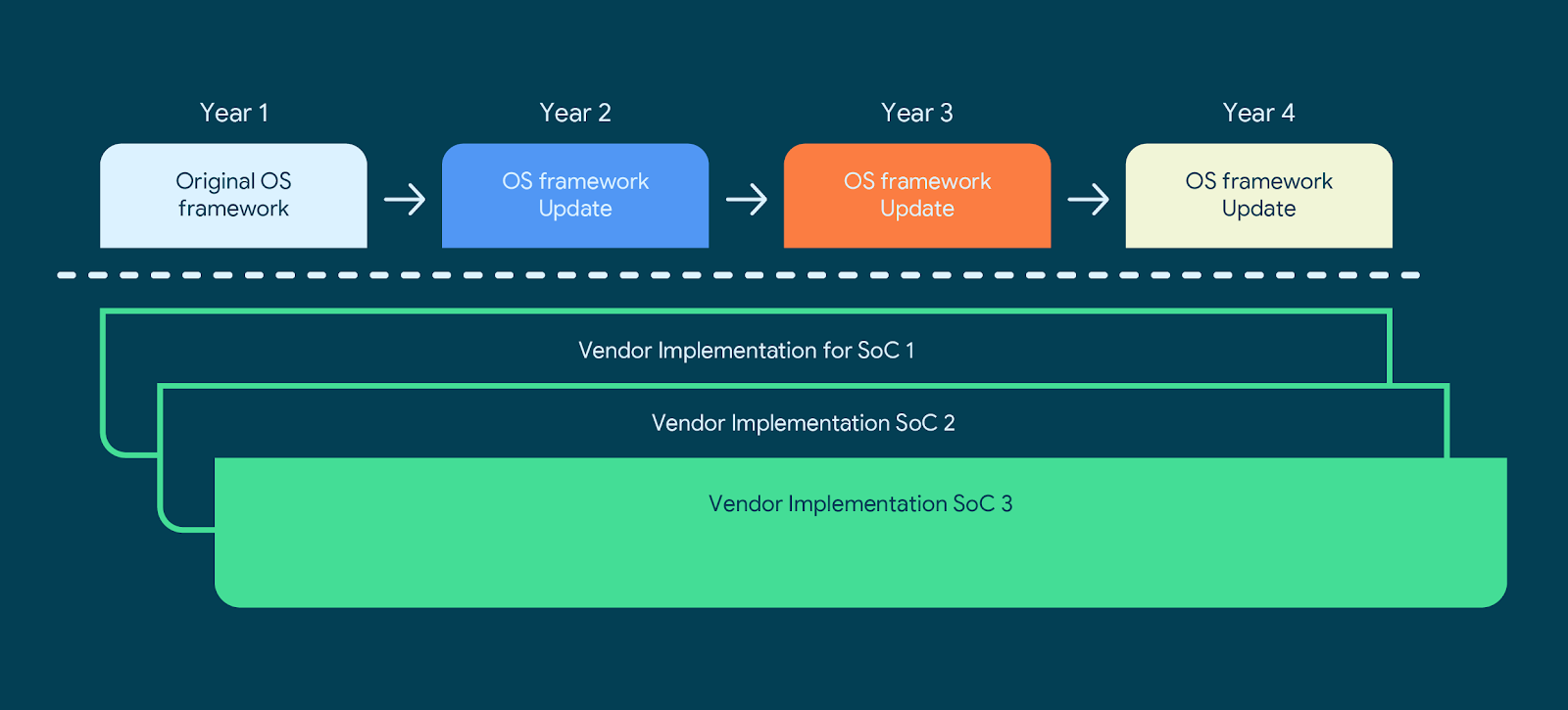
Posted by Iliyan Malchev (Project Treble Architect), Amith Dsouza (Technical Account Manager) , and Veerendra Bhora (Strategic Partnerships Manager)
Extending Android updates on Qualcomm’s Mobile Platforms
In the past few years, the latest Android OS has been adopted earlier by OEMs and deployed in larger numbers to our users. The growth in adoption has been driven by OEMs delivering faster OS updates, taking advantage of the architecture introduced by Project Treble.
At the time Android 11 launched there were 667M active users on Android 10, 82% of whom got their Android 10 build via an over the air (OTA) update. Despite the events throughout 2020, there is a continued momentum among our partners to either launch their devices on Android 11 or offer Android 11 OTAs on their devices earlier.
Our efforts till now have been focussed on making OS updates easier and faster to deploy. The other side of this coin is supporting updates for a longer period of time, and today we’d like to provide an overview of the changes we are making to help our partners achieve this.
Project Treble was an ambitious re-architecture of Android that created a split between the OS framework and device-specific low-level software (called the vendor implementation) through a well-defined, stable vendor interface. As a part of this split, the Android OS framework guarantees backward compatibility with the vendor implementation, which is checked through a standardized compliance test suite – VTS. With each Android release, Project Treble publishes Generic System Images (GSIs) that are built from AOSP sources, and are guaranteed to be backwards-compatible with the previous 3 versions of vendor implementations, in addition of course to the current release—for a total span of four years. Devices launching with the new Android release must have vendor implementations compatible with that GSI. This is the primary vehicle for reducing fragmentation within the OS framework. While we allow and encourage our partners to modify the framework itself, the modifications post-Treble must be done in a way that reduces upgrade costs from one version to the next.
Besides the reuse of a vendor implementation across OS updates, the Treble architecture also facilitates the re-use of the same OS framework code across different vendor implementations.
Another important change introduced by Project Treble is that new vendor-impacting requirements for Android devices are never retroactive. They apply only to devices launching on that Android version and not to devices upgrading from an older version. The term vendor-impacting here refers to requirements for new HALs, or for the shipping of a newer Linux kernel, to the device’s vendor implementation. A good example might be a new revision of the camera HAL to support multiple rear camera sensors. Since the Android framework guarantees compatibility with the older HALs, we enable older vendor implementations to be reused by OEMs for upgrades without the considerable cost of updating them with new requirements.
This principle, combined with the backwards-compatibility guarantee, gives device manufacturers (OEMs) the flexibility to support upgrades both faster (since they have to upgrade just the framework, which would cover all of their devices, including those with older versions of the vendor implementation), as well as at a lower cost (since they do not have to touch the older vendor implementations).
However, seen from a System-on-Chip manufacturers’ perspective, this design introduces additional complexity. For each SoC model, the SoC manufacturers now needed to create multiple combinations of vendor implementations to support OEMs who would use that chipset to launch new devices and deploy OS upgrades on previously launched devices.
The result is that three years beyond the launch of a chipset, the SoC vendor would have to support up to 6 combinations of OS framework software and vendor implementations. The engineering costs associated with this support limited the duration for which SoC vendors offered Android OS software support on a chipset. For every single chipset, the software support timeline would look like this:
Considering that SoC providers have dozens of SoC models at any point of time, the full picture looks closer to this:
The crux of the problem was that, while device requirements were never retroactive, the requirements for SoCs were. For example on Android Pie, SoCs had to support two versions of the Camera HAL API on a chipset if it was used to support new device launches and upgrades.
From this perspective, the solution was simple: we had to extend the no-retroactivity principle to the SoCs as well as to devices. With this change, the SoC provider would be able to support Android with the same vendor implementations on their SoCs for device launches as well as upgrades.
During the past year, we have been working hard to implement this solution. Building on our deep collaboration with our colleagues at Qualcomm, today we’re announcing the results of this work. Going forward, all new Qualcomm mobile platforms that take advantage of the no-retroactivity principle for SoCs will support 4 Android OS versions and 4 years of security updates. All Qualcomm customers will be able to take advantage of this stability to further lower both the costs of upgrades as well as launches and can now support their devices for longer periods of time.
Going one step further, we’re also reusing the same OS framework software across multiple Qualcomm chipsets. This dramatically lowers the number of OS framework and vendor implementation combinations that Qualcomm has to support across their mobile platforms and results in lowered engineering, development, and deployment costs. The diagram below indicates how significant the simplification is. From a software-support perspective, it’s an altogether different situation:
This change is taking effect with all SoCs launching with Android 11 and later. By working closely with Qualcomm to offer an extended period of OS and security updates, we are looking forward to delivering the best of Android to our users faster, and with greater security for an extended period of time.







